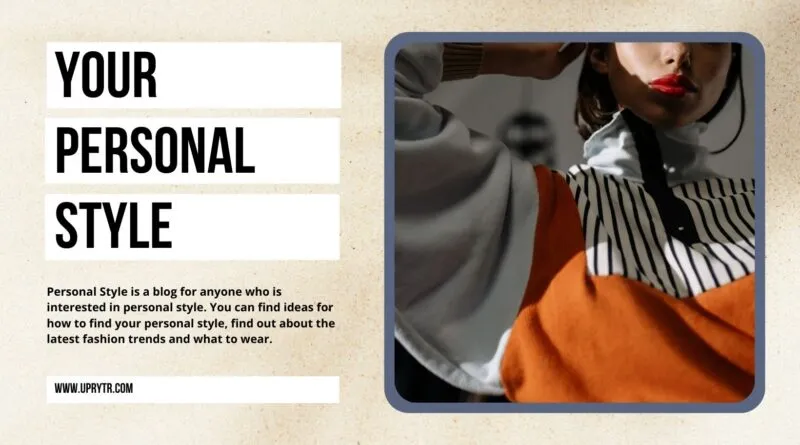Fashion
6 Ideas for Finding Your Personal Style

How do you find your personal style? This question often stumps people, but it doesn’t have to be so difficult if you know where to look. Fashion is more than just clothing—it’s about being at ease in your own skin and feeling confident about who you are and how you present yourself to the world. The next time you’re looking for fashion inspiration, try some of these ideas out to figure out what your personal style really is!
What Is Personal Style?
When you’re trying to figure out what makes you feel good and look good, it can be hard to know where to start. It seems like everywhere you turn there are new styles, brands, trends, and fashion information. It’s easy to feel overwhelmed when it comes to figuring out your personal style. Just as every individual is unique, so is every person’s definition of fashion. You know yourself better than anyone else—and it’s up to you to find what makes you feel great. Some people define their personal style based on how they want others to see them while others define their style by how they want themselves to feel when they wear their clothes.
What are some examples of personal style?
There are a number of ways to define personal style. For example, you can define it by how you dress, how you wear your hair, or what jewelry and accessories you choose to wear on a daily basis. To find inspiration in fashion designs, think about items that catch your eye when you’re out shopping or strolling down the street. If there’s an item of clothing or accessory that immediately catches your eye as something new and interesting, then chances are it was designed with style in mind—and therefore has elements that can inspire your own personal fashion ideas. Furthermore, take note of different styles that catch your eye each day—you never know which way will be right for you!
Identify themes in your wardrobe
To find your personal style, start by taking a look at what you already have in your closet. Is there anything you find yourself wearing regularly? Any colors or patterns that seem to pop up over and over again? Patterns are great if they make up most of your wardrobe, but if you notice lots of colors and styles being mixed together in different outfits, then it’s probably time to take a closer look at what’s working for you. This is especially true if any items haven’t been worn in a while—does it still fit into your current wardrobe? It can be easy to accumulate clothing that doesn’t really fit into our current personal style without even realizing it, so now might be a good time to purge any pieces that don’t work.
Build a mood board
A mood board is a collage of images that give you inspiration and ideas. It can include photographs, magazine clippings, fabric swatches, and anything else that gives you an idea of what you want your final product to look like. Make one online or use magazines/newspapers to cut pictures out as you gather different fashion thoughts and inspirations. For example, if one photo inspires a certain color scheme in your head, consider cutting out just that particular photo to place on your mood board. You may not need all of them in the end.
Create an inspiration folder
If you really want to find your personal style, it helps to look at as many different styles and ideas as possible. Create a folder on your computer or in a notebook where you can collect images and ideas of clothes, colors, jewelry—anything that strikes your fancy. Next time you’re shopping online or out and about, add anything that catches your eye to your inspiration folder so you can start tracking what types of clothing/jewelry/accessories work best with your body type and coloring. You might have a serious love affair with bright red lipstick and oversized earrings one day; but if you usually wear more professional clothes, there’s no reason to stock up on both until something changes (like if you get hired for a new job).
Follow designers on social media
Designers are often launching new pieces, collections, or projects and sharing their thoughts on social media. If you’re looking to find your style (or want some fashion inspiration), it’s a good idea to follow designers that you admire. You never know when they might post a cool new photo or idea – you can always save it in an inspiration folder or share it with your friends via social media. Some of my favorite resources include Twitter, Pinterest, Tumblr, Instagram, and other design-related blogs/websites.
Look at street-style photos
Don’t be afraid to look at street-style photos (or any other fashion-inspiration photos). Many people hold these kinds of images in low regard and say they aren’t helpful, but that doesn’t mean you shouldn’t consult them. Put on your detective hat and examine what you like and don’t like about each photo. These kinds of photos are more tangible than a runway photo or magazine spread because they represent real people wearing things in their natural environment. Look at how their clothing suits them, but also how it doesn’t; it’ll give you a feel for what kind of unique outfits work best for your body type. And never underestimate people’s ability to dress well! In addition, if you have one photo and you want to get a similar image search, this tool will help you and it is free of cost
Look at brand catalogs and store websites
Looking at catalogs and websites of top fashion brands is a great way to see what’s new and fresh. But don’t just look at clothing. Consider accessories, hairstyles, shoes, and any other fashion details that catch your eye. Catalogs and websites also often include inspiration boards—collections of photographs or art representing a particular idea or theme—that can inspire you. If you find something that inspires you, take it back to your own closet (or Pinterest board) and look at how it can be incorporated into outfits that are uniquely your own. This gives you a chance to build on existing ideas with your own spin, which will help establish your personal style.
